Top speed 105 km/h Length 9.5 m Retired 1918 | Wingspan 15 m Introduced 1914 First flight 1914 | |
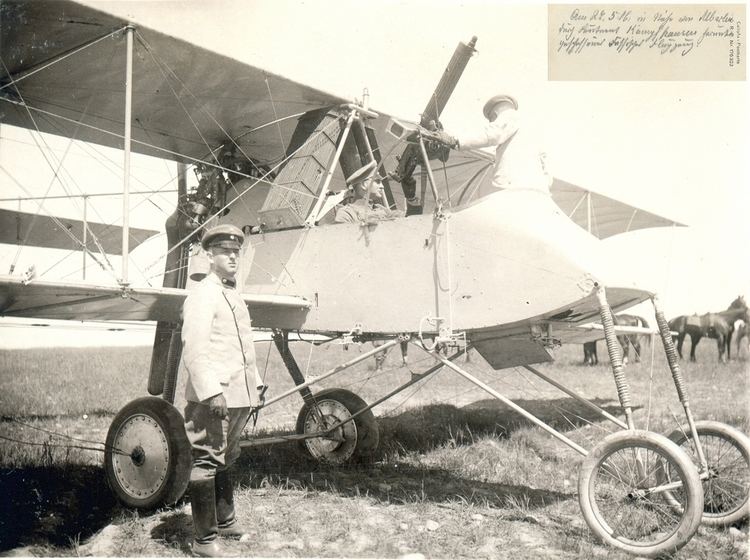 | ||
The Voisin III was a French two-seat bomber and ground attack aircraft of World War I, among the earliest of its kind. It is also notable for being the first aircraft in the war to win an aerial fight and shoot down an enemy aircraft.
Contents
- Voisin iii
- Design
- Operational history
- Fighter role
- Bomber role
- Variants
- Operators
- Specifications Voisin LA in British service
- Survivors and replicas
- References

It was a biplane with a single engine in a pusher configuration, developed by Voisin in 1914 as a more powerful version of the 1912 Voisin I design. It also incorporated a light steel frame which made it more durable when operating out of the temporary wartime military aviation airfields.
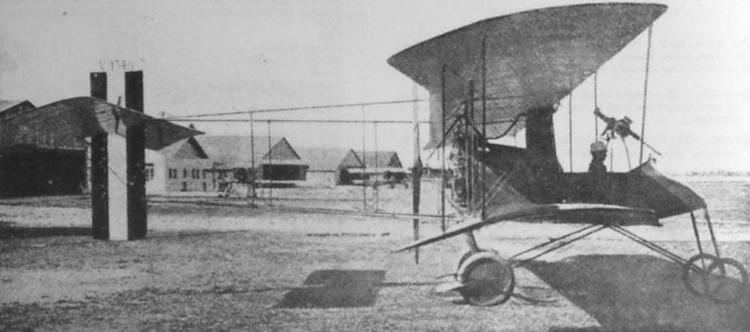
Voisin iii
Design
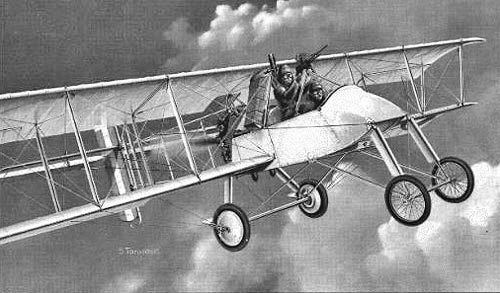
The first Voisin III was powered by a single 97-kilowatt (130 hp) Salmson M9 engine, later the 110-kilowatt (150 hp) P9 and R9. It had a range of 200 km (120 mi), top speed of 105–113 km/h (65–70 mph) and ceiling of 3,350–6,000 m (10,990–19,690 ft) (sources vary).
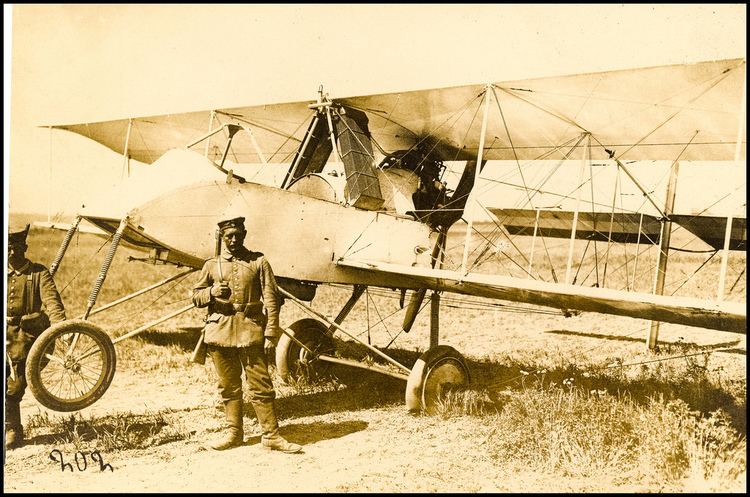
Earlier aircraft were armed with a Hotchkiss M1914 machine gun on the fuselage operated by a standing observer, and later models had 37 mm or 47 mm guns for ground attack. It could carry up to 55 kg (121 lb), 60 kg (130 lb) or 150 kg (330 lb) of bombs (sources vary).
Operational history
Early in the war, the Voisin III became the most common Allied bomber. Significant numbers were purchased by the French Aéronautique Militaire and the Imperial Russian Air Force. Russia ordered more than 800 from France and built a further 400 under license at DUX in Moscow. Around 100 were built in Italy, and 50 in the United Kingdom, while smaller numbers were purchased by Belgium and Romania. One French aircraft was forced to land in Switzerland in 1915 after running low on fuel in combat with a German aircraft and was put into service with the Swiss Fliegerabteilung.
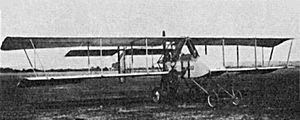
Like many other aircraft of its era, Voisin III was a multi-purpose aircraft. Its missions included reconnaissance; artillery spotting; training; day- and night bombing; and ground attack.
Fighter role
On October 5, 1914, over Jonchery, Reims, Sergeant Joseph Frantz and Corporal Louis Quénault of Escadrille VB24 scored the first air-to-air kill (not involving ramming - see Pyotr Nesterov) of the war, shooting down a German Aviatik B.I (no. B.114/14) with machine gun fire. Quénault fired two 48-round magazines at the Germans. The Germans returned fire with rifles. When the Frenchman's Hotchkiss M1909 machine gun jammed, he successfully returned fire with his rifle. Oberleutnant Fritz von Zangen and Sergeant Wilhelm Schlichting of FFA 18 fell to their deaths. This is believed to be the first air-to-air kill in any war.
Bomber role
The Voisin III is also notable in being among the earliest dedicated bombers. The steel frame construction of the aircraft enabled a bomb load of approximately 150 kg (330 lb) to be carried. With development, the final variants of the type were able to carry twice this load.
France was the first country to organize dedicated bomber units on the Western Front, using the Voisin. Three Escadrilles (squadrons) of the aircraft comprised the first bomber group, GB1, formed in September 1914 under the leadership of Commandant de Goÿs. de Goys’ contribution both as a tactical leader and theoretician, in developing the theory and practice of long range bombing sorties, is significant. An almost unopposed bombing campaign was conducted by GB1 during the early months of 1915, culminating in a retaliatory attack against the Badische Anilin Gesellschaft at Ludwigshafen, Germany, on 26 May 1915, shortly after the German Army introduced poison gas in battle. Of the 18 aircraft which took part, only Goÿs himself failed to return, his Voisin being forced down by mechanical failure.
Following the success of GB1 other bomber groups were formed, and successful daytime attacks on targets within Germany ensued throughout the summer and autumn of 1915, with as many as 62 aircraft involved. By 1916, advances in aircraft design made the Voisin III increasingly obsolete, as it became vulnerable to better-performing German fighter aircraft. With mounting losses and better designs being introduced, a decision was made to withdraw Voisin III from day operations. Among other types, it was replaced by the Voisin V (Voisin 5).
Variants
Operators
Specifications (Voisin LA in British service)
Data from The Aeroplanes of the Royal Flying Corps (Military Wing)
General characteristics
Performance
Armament
Survivors and replicas
There is a Full-scale replica of the Voisin III La on display at the Pearson Air Museum in Vancouver, WA near Portland Oregon. An original Voisin VIII bomber airplane, a 1918 variant of the Voisin III equipped with a more powerful engine, is preserved in Washington D.C. at the National Air and Space Museum. An early original Voisin aircraft (N38933, s/n 1) is also on display at the Old Rhinebeck Aerodrome, Red Hook, NY.. A Voisin III LAS is displayed at the Musée de l’air et de l’espace at Le Bourget near Paris.
